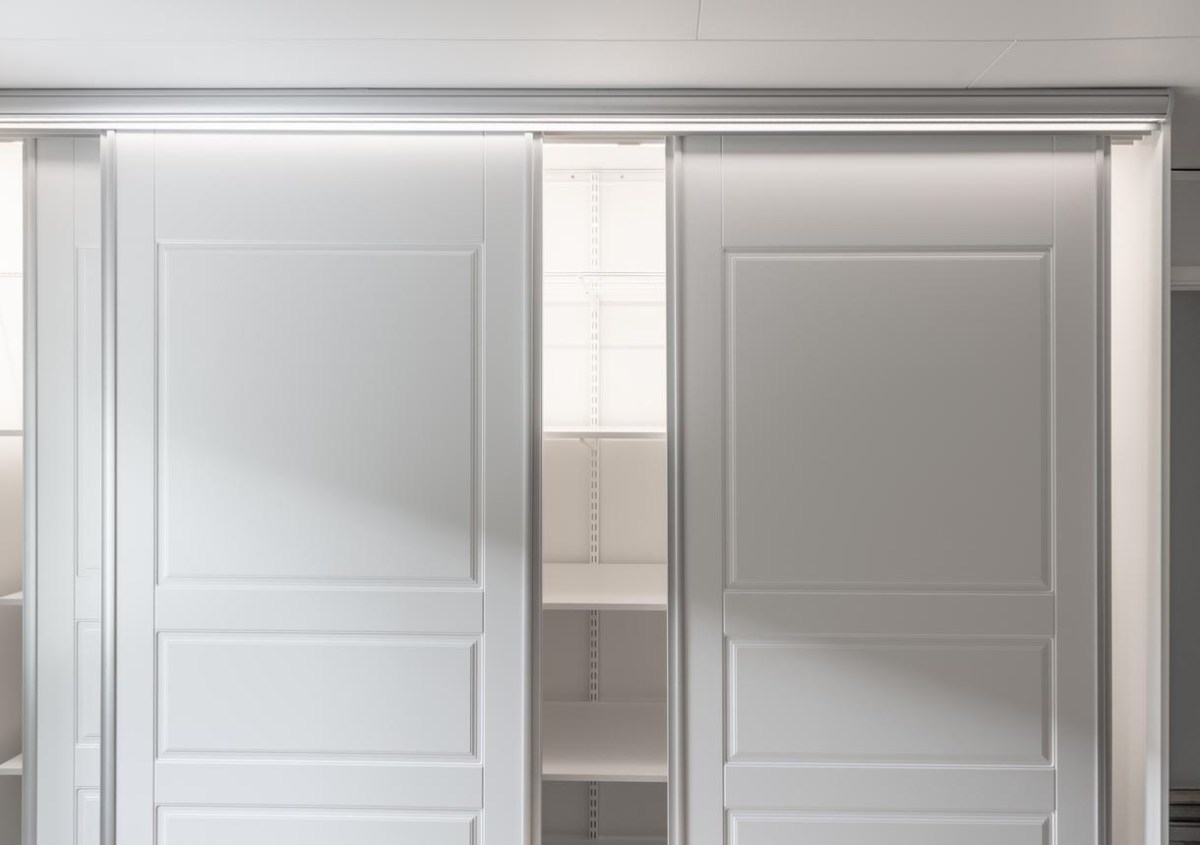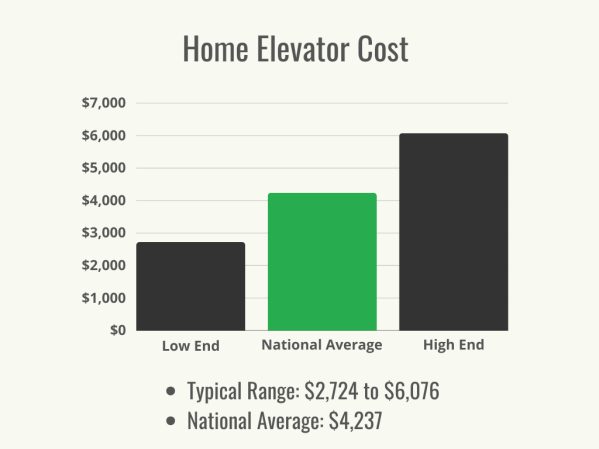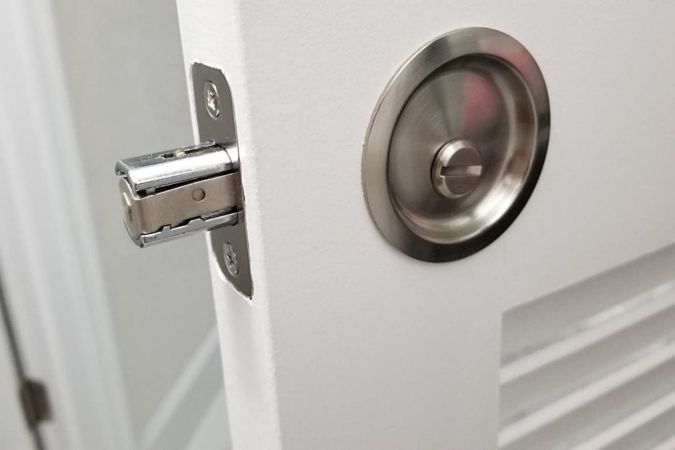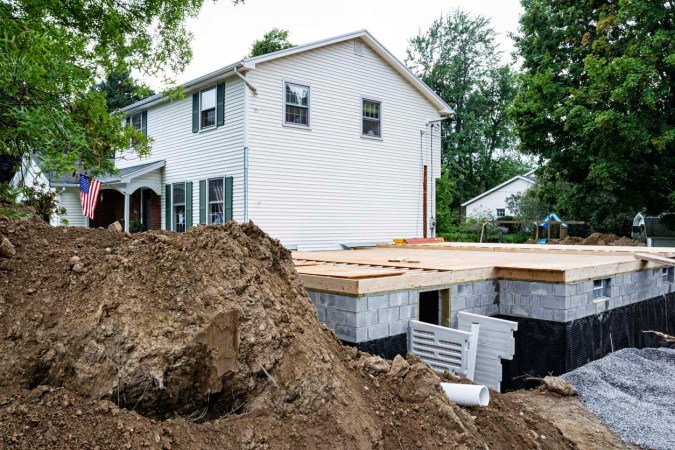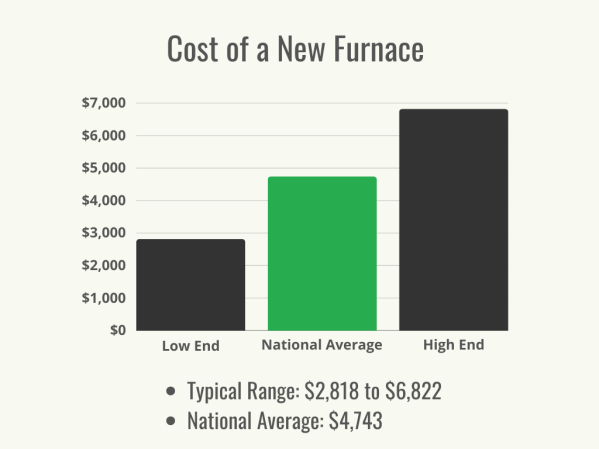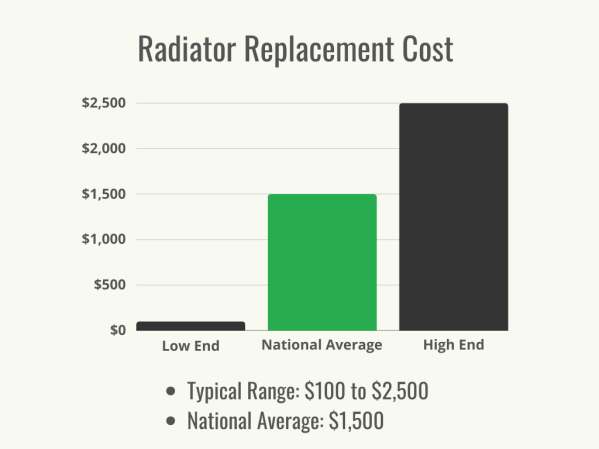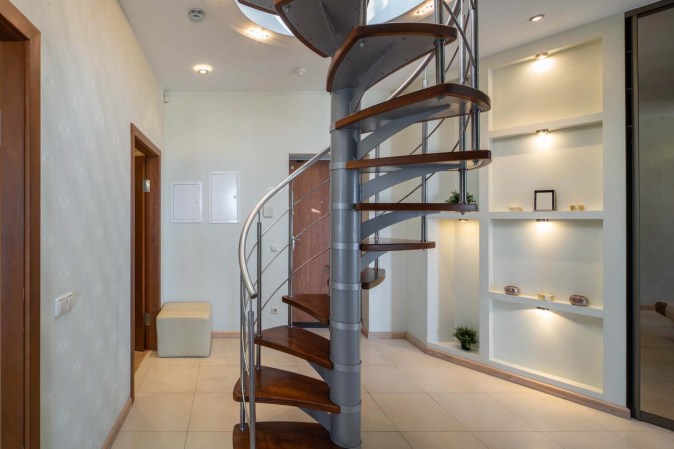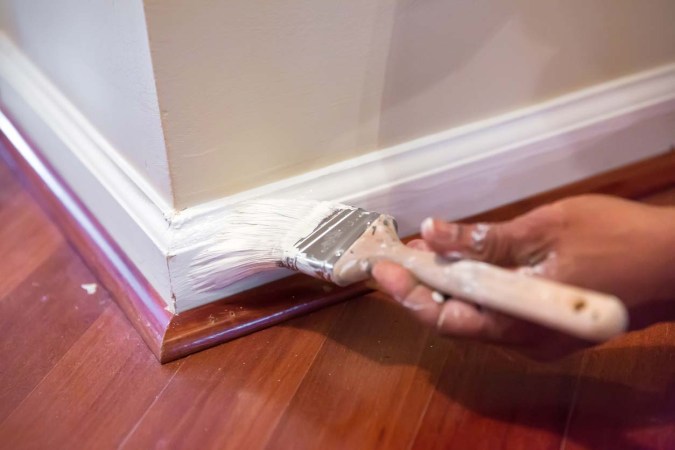We may earn revenue from the products available on this page and participate in affiliate programs. Learn More ›
Highlights
- A pocket door typically costs between $500 and $3,500 to install, with a national average cost of $1,000.
- The exact cost to install a pocket door will depend on the size and material of the door, the prep work required, and the local labor costs.
- Some of the benefits of a pocket door include privacy, accessibility, and saving space.
- A homeowner who has experience working with drywall, electrical wires, and plumbing may be able to install a pocket door themselves; however, in most cases, it’s best to leave this task to a professional.
Pocket doors, once popular in Victorian homes that needed to conserve space, are making a comeback in homes large and small. Instead of swinging open and closed on hinges, a pocket door is mounted on a track and slides into the wall when open. This is a great space-saving strategy, as pocket doors can be installed in both new builds and in existing homes. However, the cost will vary due to the difference in the amount of work involved. The cost to install a pocket door ranges from $500 to $3,500, according to Angi and HomeAdvisor, with a national average of $1,000. There are a lot of factors to consider when installing a pocket door, especially if it’s being installed as part of a renovation project. These include removing the existing wall, reworking any plumbing or electric, installing the track, and repairing the wall.
Factors in Calculating the Cost to Install a Pocket Door
The factors that impact the cost of pocket door installation include the size of the door, what it’s made of, how much labor is needed, and the amount of prep work required to get the wall ready for the pocket door. The costs can vary depending on local material cost averages and differing labor costs.
Door Size
The size of the door determines how much material is needed, so this factor is also impacted by the type of wood selected for the pocket door. Standard pocket doors are 36 inches, but they can be larger or smaller depending on the design needs and what the space will allow. In larger doorways, a double pocket door—pocket doors installed on both sides of the door frame—may be the best option.
| Door Size | New Construction Installation Cost (Materials and Labor) | Retrofit Installation Cost (Materials and Labor) |
| 32 inches | $450 to $1,500 | $1,350 to $2,200 |
| 34 inches | $500 to $1,600 | $1,400 to $2,800 |
| 36 inches | $550 to $1,850 | $1,550 to $2,950 |
| 46 inches | $600 to $1,900 | $1,600 to $3,100 |
| 48 inches | $700 to $2,800 | $1,600 to $3,800 |
| 60 inches | $800 to $3,300 | $1,700 to $4,200 |
Door Material
The door material can heavily impact the final cost to install a pocket door. There are a number of different choices, and the best one depends on the needs of the space and homeowner. Solid wood doors are a great choice for a traditional look, while aluminum or fiberglass work well in modern designs.
| Material | Cost Per Door (Materials and Labor) |
| Aluminum | $600 to $2,200 |
| Fiberglass | $600 to $1,000 |
| Glass | $550 to $2,200 |
| Hollow core | $500 to $800 |
| Solid wood | $600 to $2,200 |
Labor
The cost to install a pocket door will depend on local labor costs, the individual company, and the amount of work it will take to complete the installation. Pocket door kits can be purchased by the homeowner so they can install the pocket door themselves, but it’s important to have a strong understanding of wall construction, plumbing, and electrical wiring before tackling this as a DIY project.
It can take around 6 hours to install a pocket door, and labor costs for that amount of time can fall between $350 and $600. For a new-construction installation, labor costs can be as low as $100, but for a retrofit installation that requires the demolition of the existing wall and possible rerouting of plumbing and electrical wiring, the labor can run as high as $2,500.
Prep Work
The amount of prep work required to install a pocket door depends on whether it’s being installed in a new building or an existing one. If a pocket door is to be installed in a new building, it can be included in the plans and the wall can be prepared as it is being built, significantly lowering the cost of prep work.
In an existing home, the prep work to install a pocket door can be extensive, including removing the drywall, which can cost between $0.50 and $1 per square foot to remove. Labor for rewiring an outlet can run between $65 and $150 for the first hour of work and then $40 to $100 for each additional hour of work plus the cost of materials. Calling in a plumber can cost between $45 and $200 per hour plus the cost of materials.
Additional Costs and Considerations
Other costs and considerations can impact the final cost of installing a pocket door. Installation in new construction is much easier than a retrofit, so the cost will vary depending on where it is being installed. In some spaces, a double pocket door is needed to fully close off the space. Old door disposal, potential mold remediation, and the hardware will also need to be accounted for.
New Construction vs. Retrofit
Installing a pocket door in a new building is a fairly easy task because the pocket can be built into the home’s plans, allowing the door to slide in and out without obstructions. In new construction, a pocket door frame can be purchased and installed during construction, saving the time it takes to construct one or make space for one in an existing wall. Pocket door installation in new construction typically costs between $500 and $2,500.
In a retrofit, the old wall will need to be removed, ideally on both sides, and electrical wiring and plumbing may need to be rerouted to make room for the door. Studs will need to be removed and, if they are load bearing, a header will need to be installed. All of this extra work can add up to a cost between $1,400 and $4,300 to install a pocket door in an existing wall.
Single vs. Double Door
A single door slides into one side of the door frame and meets the opposite side when it’s closed. Double doors are installed on both sides of the door frame and meet in the middle.
In new construction, installing a single pocket door will cost between $500 and $2,500, while the cost increases to between $1,400 and $4,300 to retrofit a door in an existing wall. For a double door, the cost increases to between $1,000 and $5,000 for new construction and $3,000 and $11,000 for an existing home.
Interior vs. Exterior Door
Typically, pocket doors are designed to be installed on the interior of the home. Exterior pocket doors aren’t common, and exterior sliding doors rarely tuck into the door frame. In the event that the homeowner wants an exterior pocket door, the added cost of designing the pocket door frame to be suitable for exterior use (along with waterproofing) can bring the installation cost to $2,500 or more.
Old Door Disposal
It will cost around $100 to have the old door removed and disposed of. This will likely be included in the cost of professional pocket door installation.
Mold Remediation
When the old door is removed and the inside of the wall is exposed, there is a chance that the contractor may reveal mold lurking on the interior of the wall. If this happens, or they discover other issues or any hazardous material, such as asbestos, it can cost between $10 and $25 per square foot for a mold remediation company to handle the problem.
Door Automation
For added accessibility and convenience, pocket doors can be automated with a sensor that attaches to the pocket door guides. This additional feature can cost around $500 per door.
Hardware
Pocket door hardware is different from standard door hardware in that it doesn’t include a standard door knob or lever handle. Instead, a retractable latch or pocket door handle is installed on the visible edge of the door and the latch lifts up, which allows the door to be pulled closed. The door can include one of the best pocket door locks, which will lock into hardware installed on the opposite wall. A pocket door lock costs between $10 and $40.
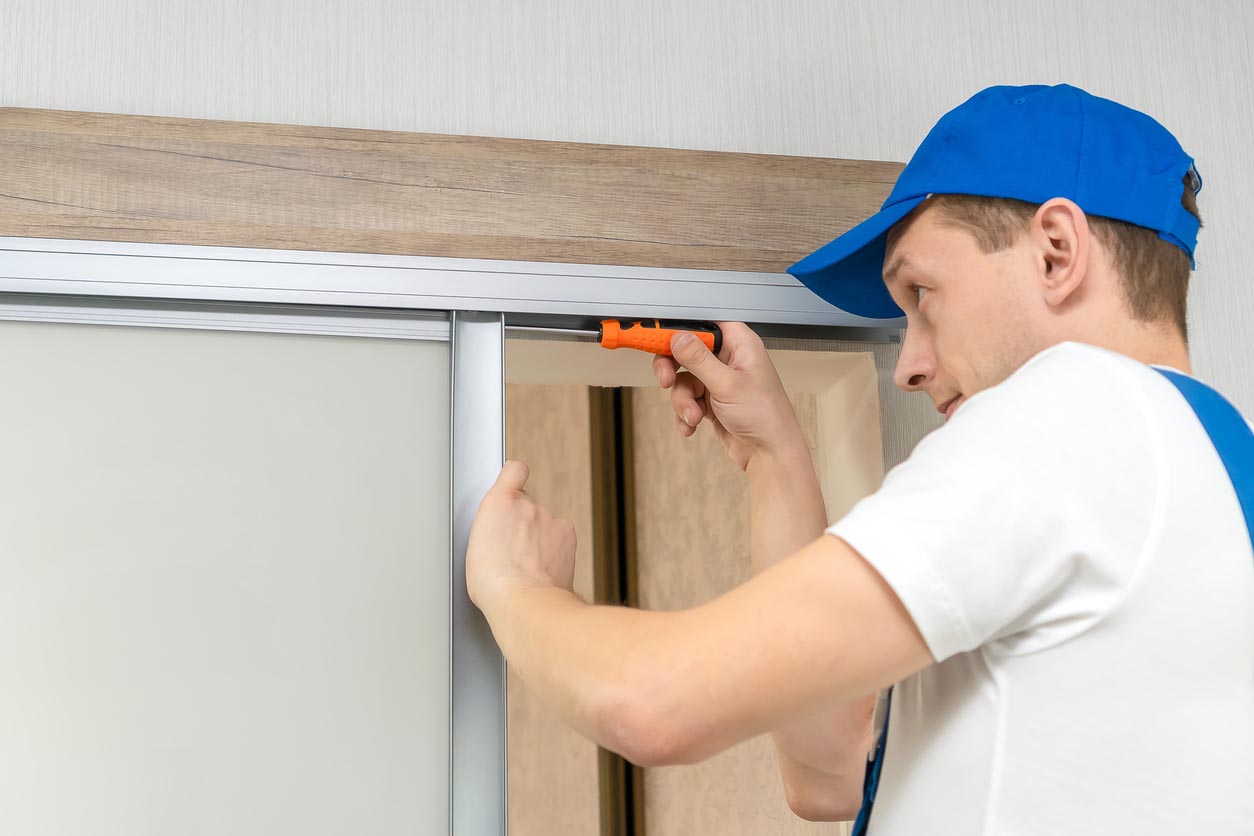
Types of Pocket Doors
Pocket doors that are original to an older home are likely made from solid wood, but more modern options include aluminum, fiberglass, and glass pocket doors. Depending on the needs of the home and the homeowner, the choice may be determined by the size of the opening, the location of plumbing and electric, and the budget.
| Type of Pocket Door | Average Cost (Materials Only) |
| Aluminum | $500 to $2,000 |
| Chalkboard | $400 to $2,000 |
| Fiberglass | $500 to $800 |
| Glass | $450 to $2,000 |
| Hollow core | $400 to $600 |
| Solid wood | $500 to $2,000 |
Aluminum
Aluminum pocket doors are less common than pocket doors made of other materials, but they are a stylish choice for a modern home. The doors themselves cost between $500 and $2,000, and it costs between $600 and $2,200 to install in a new home and between $900 and $2,000 to retrofit into an existing home. One caution with aluminum is that it is more prone to dents than other materials, so if the door is in a high-traffic area or there are kids in the home, it may not be the best choice.
Chalkboard
A chalkboard pocket door is a creative deviation from a standard pocket door. Homeowners, friends, and family members can write notes or reminders on the door that can be conveniently hidden when the door is in the open position. This type of pocket door costs between $400 and $2,000. To have it installed adds $100 to $200. Another option is to paint an existing or new pocket door with chalkboard paint.
Fiberglass
Fiberglass pocket doors require little maintenance and are durable, so they can stand up to busy households and lots of use. The door itself will cost between $500 and $800. For new-construction installation, the cost ranges from $600 to $1,000 and in a retrofit, the cost typically falls between $900 and $1,800.
Glass
A glass pocket door will cost between $450 and $2,000. Adding installation will increase the cost to between $550 and $2,200. Glass pocket doors are framed with either wood or aluminum and can be heavier than pocket doors made from some other materials, requiring a stronger frame. Greater care will need to be taken during installation, which can increase labor times.
Hollow Core
A hollow-core pocket door is made from wood and has no interior material—it’s hollow. While this makes it lightweight and more affordable than a solid wood door, it also means that it’s less durable and may not last as long as other options. A hollow-core door costs between $400 and $600. Installing this type of door in a new building will cost between $500 and $800, and in a retrofit, installation will cost between $900 and $1,500.
Solid Wood
The most traditional pocket door material is solid wood. This type of pocket door is highly durable and can be made from a variety of different wood types to create the desired look. It can also be stained to match the home’s aesthetic and have different panel styles. Wood doors are one of the pricier options, costing between $500 and $2,000. For installation in new construction, homeowners can expect to pay between $600 and $2,200 and in a retrofit, it will cost between $900 and $1,800.
Benefits of Choosing to Install a Pocket Door
Pocket doors offer a number of benefits including privacy, accessibility, and saving space. They are also a nostalgic nod to the past when pocket doors were commonly used as a space-saving measure in smaller homes. They add character and privacy as well as increased accessibility for those with mobility issues.
Space Saving
The most cited and obvious benefit of a pocket door is its space-saving abilities. Pocket door guides are hidden in between the walls and in the header above the door. Because the door doesn’t swing into the room, furniture can be placed closer to the door frame, and wall decor won’t be hidden as it would be when a swinging door is open.
Privacy
Pocket doors provide the option of privacy in rooms that may be too small for a standard door that swings on hinges. As a result, it can increase privacy, especially in bathrooms, by sliding out from the wall and providing a barrier. Adding locking hardware can make the door even more secure.
Accessibility
Because a pocket door slides into the space between the walls rather than swinging inward or outward, those with mobility issues can have easier access to different rooms and privacy because they won’t have to move out of the way of the swinging door. If the pocket door is automated with sensors and can open on its own, that makes it even more accessible to as many users as possible.
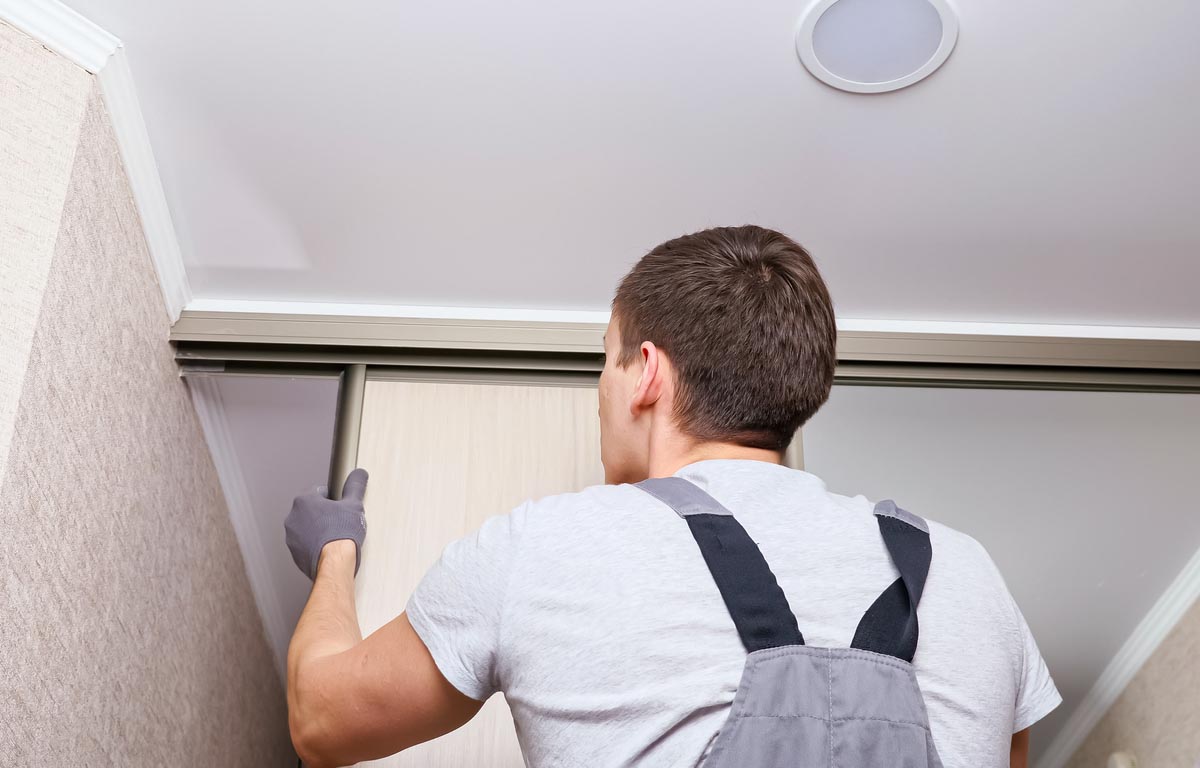
Pocket Door Installation: DIY vs. Hiring a Professional
Pocket door installation in an existing home is a difficult task that requires the removal of an existing wall and its subsequent repair—essentially building a new wall. If there is plumbing or electrical wiring behind the wall, it will need to be rerouted or removed to make space for the pocket door frame and the pocket door itself. With this in mind, it is still possible to complete pocket door installation as a DIY project, but only as long as the homeowner has the knowledge and skills needed. An alternative route is to hire contractors for specific tasks. For instance, if the homeowner is able to do their own electrical work, they can contract out to a drywall specialist and plumber to do the tasks they aren’t comfortable doing.
Hiring a contractor to install a pocket door will come with labor costs, but these pros may also be able to complete the project in a more timely fashion than if the homeowner does the work themselves. And because a wall and possibly toilets, faucets, and lights will be out of commission during the installation, the faster the installation is completed, the better. If unexpected issues, like water damage or mold, are discovered, a pro will be able to handle them quickly, reducing the likelihood of more damage.
How to Save Money on the Cost to Install a Pocket Door
Looking at the cost to install a pocket door may make homeowners think twice about installing one in their home. But there’s good news; there are a few ways to save money that can help make this design goal a reality.
- Opt for a cheaper door. Choose a hollow-core door to save on the cost of the actual door.
- Shop around. Get quotes from multiple contractors and compare.
- Install during building. Install a pocket door during the home construction stage rather than waiting until a later time.
- DIY the prep work. If you’re installing the door in a wall without electrical wires or plumbing, you may be able to take on some of the prep work to save money.
- Consider barn doors. They offer similar benefits when it comes to saving space, but they cost less to install since there’s no need to open up the wall.
Questions to Ask About Pocket Door Installation
Installing a pocket door can disrupt the daily household routines, especially if the installation is in a frequently used room in the house. Asking the contractor a few questions can help prepare homeowners for the process.
- What does the price include?
- Do I need to purchase the door and hardware, or will you?
- Is there anything not included in the quote (disposal of the old door, etc.)?
- How can I prepare the space for installation?
- Do you complete plumbing and electrical work yourself or hire a subcontractor?
- Who do I contact if I have issues with the door after installation?
- How do you deal with any issues you may find once you remove the wall (mold, water damage, etc.)?
- Do you complete the finish work (painting, replacing trim, etc.)?
- How long will this project take to complete?
- Am I required to be present during installation?
FAQs
Pocket door installation can be an exciting prospect. You’ll be saving space and adding privacy, but as with any home improvement project, you’re likely to have questions along the way. The following are some of the most frequently asked questions about pocket door installation.
Q. How much does labor cost to install a pocket door?
Labor costs for pocket door installation can be around $100 per hour or more. The labor cost for installation should be included in the quote you get from your contractor. It may be possible to reduce labor costs by doing some of the work yourself, but be sure to check with your contractor before you start anything.
Q. How much does it cost to fit a pocket door?
Fitting a pocket door runs between $500 and $1,850 for new construction and $1,550 and $2,950 as part of a remodeling project. These costs include the door, supplies, and labor, and the cost will vary depending on the type of door you choose, the pocket door frames and hardware, the extent of the work that needs to be done to the existing wall, and more.
Q. Can you install a pocket door in an existing wall?
Yes, you can install a pocket door in an existing wall, but it requires the demolition of the current wall in order to install the pocket door frame in the space between the walls. Installing a pocket door in an existing wall is more expensive than installing one as part of a new-construction project because you have to account for the extra labor and materials for the wall demo and reconstruction.
Q. Is installing a pocket door easy?
Installing a pocket door can seem like an easy project on the surface, but it can actually get complicated quickly because of the wall demo and drywall installation required to complete the project. Installing the pocket door itself is relatively easy because you can purchase a pocket door frame that, once assembled, will fit into the prepared space. Then, you’ll have to install drywall, tape and mud the seams, and repaint the wall.
Q. Do you need a thicker wall for a pocket door?
Walls containing a pocket door should be at least 4 inches thick to accommodate the door and its frame. Standard wall width is 4½ inches, so most walls should be able to accommodate a pocket door provided you have at least 66 inches of linear space available on the wall where the pocket door will be. This means that pocket doors typically don’t fit in walls that are tight to the corner of the room.
Q. Are pocket doors good for bedrooms?
Pocket doors are a good choice for bedrooms because of the amount of space they save. If you need privacy but have a small space or want to add some character, a pocket door can be installed in your bedroom. They are also quieter than other doors because they don’t swing or latch, making it perfect for areas where other people are sleeping.
Q. How much of a gap should you leave under a pocket door?
There should be a gap of between ¾ inch and 1½ inches under the door to ensure there is enough clearance for it to close smoothly. The size of the gap under the pocket door will depend on the floor covering, with wood or tile needing a smaller gap and carpet requiring a larger gap. Test the door to make sure it closes smoothly before completing the installation.
Q. How do you fix or replace a pocket door?
If a pocket door is difficult to close, you may just need to spray a silicone spray on the rollers or tighten the track. If the track needs to be replaced or leveled, cut a small area of drywall out to access the hidden part of the track. Then, remove the track and install a new one. To replace the door itself, close the door, lift it from the track, and hang the new door.
Q. Can you install a pocket door without removing the wall?
To install a pocket door, you don’t need to remove the entire wall, but you do need to cut away the drywall on the wall where the pocket door will go and cut away the studs to expose enough space in which to install the pocket door frame. The rest of the wall can remain intact.
Q. What is the minimum wall size for a pocket door?
To install a pocket door, there must be at least 66 inches of linear space available with no studs, plumbing, or electrical wiring or outlets, all of which can be removed during the demolition phase. The wall itself must be at least 4 inches thick to accommodate the pocket door and its frame.
Q. What is the difference between a pocket door and a sliding door?
A pocket door slides into the wall, while a sliding door slides along the exterior of the wall or slides over itself. Pocket doors disappear from view and don’t require any clearance on the wall next to it, allowing furniture or decor to be placed along or on the wall. Sliding doors, while they save space by not swinging, will need clearance along the wall.
Q. Are pocket doors good for bathrooms?
Pocket doors are ideal for bathrooms, especially small ones, because of their space-saving capabilities. If you choose to install a pocket door in your bathroom, you’ll need to purchase locking hardware to increase the amount of privacy the door will provide. Pocket doors can make bathrooms seem larger because the door doesn’t take up any wall or floor space when it is open.
Sources: Angi, HomeAdvisor, Fixr, Old House Online

